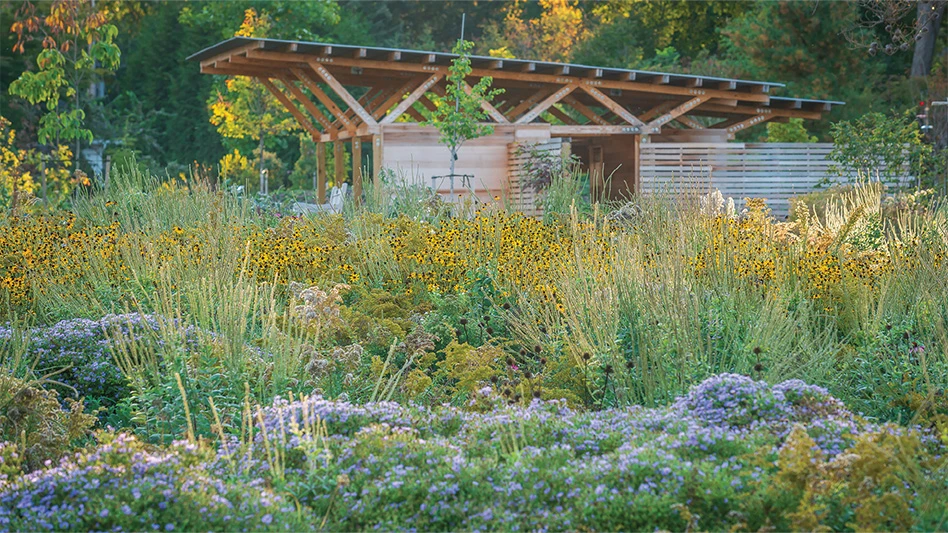The first non-petunia to wear the Wave brand name, Cool Wave pansies from PanAmerican Seed are vigorous, spreading and can help extend the selling season. True to its name, the pansy has a great over-wintering hardiness and returns early in the spring. Trailing up to 30 inches, Cool Wave works as a spiller in mixed combos or for cool-season baskets, with blooms that can stand the rain and weather better than large-flowered types. Cool Wave comes in four colors — frost, violet wing, white, yellow — and a mixture.
Production:
- Use a well-drained media. EC should be less than .75 mmhos/cm. Keep the pH level as low as possible to avoid initial stretch.
- Maintain a pH range of 5.4 to 5.8 throughout production.
- Pansies best grow in a larger plug cell size, such as a 128-cell tray, to promote early branching, a stronger lateral growth and a shorter crop time with more flowers.
- For better germination, a medium covering of coarse-grade vermiculite is recommended to help maintain humidity.
- Relative humidity should be maintained between 95 and 97 percent until cotyledons appear.
- Daytime temperature should be kept between 65°F and 70°F during stages one and three. In stage two, temperature can be as high as 72°F. Keep it between 62°F and 67°F during stage four, and 62°F to 70°F for finishing. Keep nighttime temperature at 60°F for stages two and three, 55°F for stage four, and between 55°F and 60°F when finishing.
- Keep media moisture between levels three and four during stage two, and at level three during stages three and four.
- Light can be up to 2,500 foot-candles in the second and third stages, and up to 5,000 foot-candles during stage four. Light levels should be as high as possible during finishing.
- In the second stage, apply a nitrate-form fertilizer with low phosphorous at rate 1. During the third and fourth stages, increase the rate to 2. Keep EC between 0.7 and 1.0 mS/cm.
Cool Wave requires more fertilizers than a standard pansy to support its spreading nature.

Explore the July 2012 Issue
Check out more from this issue and find your next story to read.
Latest from Greenhouse Management
- Last Word with Angela Labrum, Bailey Nurseries
- Iowa plant supplier Plantpeddler building retail complex
- This month's Greenhouse Management magazine is about native plants and sustainability
- The HC Companies, Classic Home & Garden merge as Growscape
- Terra Nova releases new echinacea variety, 'Fringe Festival'
- Eason Horticultural Resources will now officially be known as EHR
- BioWorks receives EPA approval for new biological insecticide for thrips, aphids, whiteflies
- ScottsMiracle-Gro transfers cannabis subsidiary to focus on core lawn and garden business







